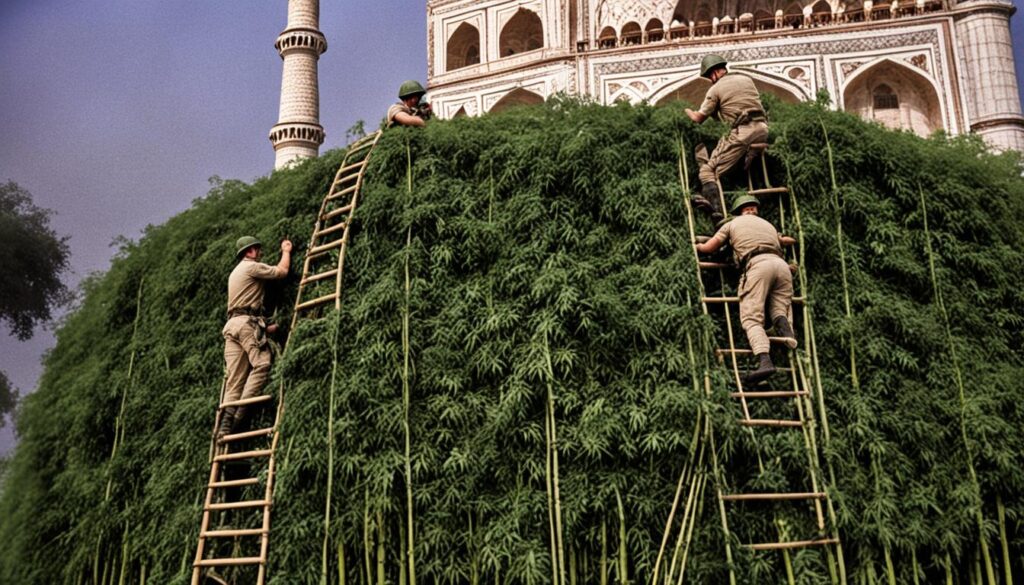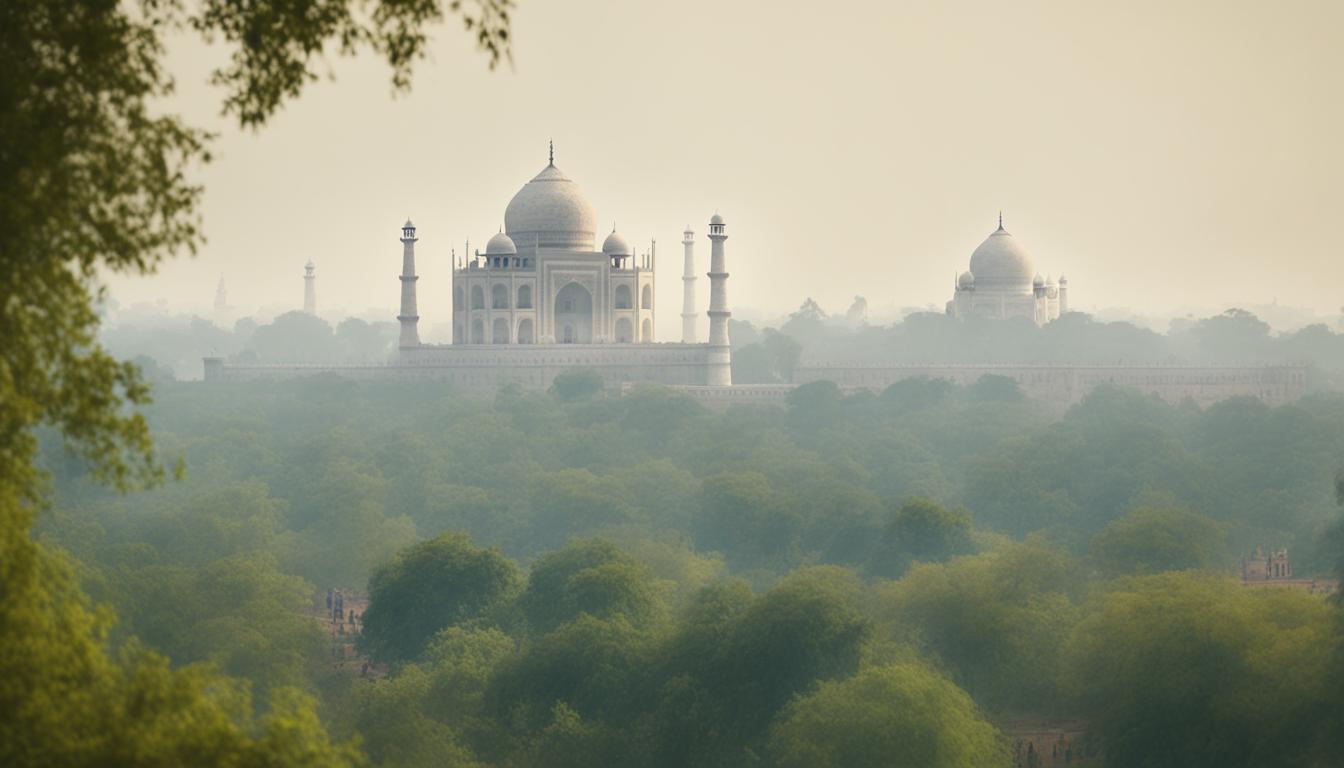The iconic Taj Mahal, one of the most recognizable monuments in the world, faced an unusual threat during World War II. Fearing potential air raids by the Japanese and Germans, the British army devised an ingenious plan to protect this magnificent structure. In 1942, they decided to camouflage the Taj Mahal’s distinctive onion-shaped dome using an unlikely material: bamboo.
The goal was to make the monument resemble nothing more than a large pile of vegetation when viewed from high above. By covering the dome with bamboo scaffolding, the British hoped that enemy pilots would overlook the Taj Mahal, mistaking it for an unremarkable mound of plants and thus sparing it from bombardment. This clever camouflage tactic aimed to safeguard one of India’s most prized architectural wonders during the tumultuous times of World War II.
Key Takeaways
- The Taj Mahal, a world-renowned monument, was at risk of bombing during WWII
- In 1942, the British army camouflaged the Taj Mahal’s dome using bamboo
- The camouflage aimed to make the monument resemble a pile of vegetation from the air
- By disguising the Taj Mahal, the British hoped to protect it from potential air raids
- This ingenious plan sought to preserve one of India’s most iconic architectural wonders
The British Army’s Ingenious Plan to Protect the Taj Mahal
During World War II, the British army devised a clever plan to protect the iconic Taj Mahal from potential Luftwaffe bomber attacks. In 1942, they constructed an elaborate scaffolding system using bamboo, a material known for its lightweight, durable, and flexible properties that grows abundantly in India. The scaffolding was strategically placed over the entire dome of the Taj Mahal, which stands at an impressive height of nearly 200 feet.

The primary objective of this ingenious camouflage was to mislead enemy bombers by obscuring the distinctive silhouette of the Taj Mahal. Additionally, the bamboo scaffolding helped to dim the gleaming white marble, which, when illuminated by bright moonlight, could shine like a beacon in the dark, making it an easy target for enemy aircraft.
The British army’s innovative use of bamboo scaffolding not only provided a practical solution for protecting the Taj Mahal but also demonstrated their commitment to preserving India’s most treasured monument. By leveraging the natural resources available in the region, they were able to create an effective camouflage system that successfully safeguarded the Taj Mahal from potential harm during the war.
Repeated Efforts: Taj Mahal’s Camouflage in Later Wars
The ingenious plan to protect the Taj Mahal during World War II was not a one-time occurrence. In fact, the iconic monument was camouflaged twice more during the wars between India and Pakistan in 1965 and 1971. The Taj Mahal, a symbol of love and architectural brilliance, found itself at the center of strategic concerns during these tumultuous times.
While photographic evidence primarily showcases the dome of the Taj Mahal covered in a dense layer of bamboo scaffolds, it is widely believed that the entire structure was concealed during these conflicts. The purpose of this camouflage was to deceive enemy bombers flying miles above, making the Taj Mahal appear as nothing more than a stockpile of bamboo from their aerial perspective. This tactic was especially crucial given the lack of high-precision GPS and satellite imagery at the time.
The repeated efforts to camouflage the Taj Mahal during the wars between India and Pakistan underscore the monument’s significance not only as a cultural treasure but also as a potential target. The decision to obscure the Taj Mahal’s distinctive features demonstrates the lengths to which the authorities were willing to go to protect this iconic symbol of India’s heritage.
Despite the challenges posed by these conflicts, the Taj Mahal emerged unscathed, a testament to the effectiveness of the camouflage strategies employed. The repeated concealment of the monument during times of war serves as a reminder of the complex interplay between art, history, and the harsh realities of armed conflict. The Taj Mahal’s enduring beauty and resilience continue to captivate visitors from around the world, even as its wartime camouflage remains a fascinating chapter in its storied history.
Preserving India’s Most Prized Monument
The Taj Mahal, India’s most prized monument and one of the world’s greatest architectural wonders, has always been a symbol of the country’s rich cultural heritage. During times of war and conflict, safeguarding this iconic structure becomes a paramount concern for the Indian government. Much like how the Declaration of Independence was secretly transported to Fort during World War II to protect it from potential enemy attacks, India has taken extraordinary measures to shield the Taj Mahal from harm.
Throughout history, the Taj Mahal has been camouflaged using innovative techniques to keep it hidden from aerial view during conflicts. These efforts underscore the importance of preserving not only the physical structure but also the cultural significance it holds for the people of India. The monument’s white marble exterior, intricate inlaid designs, and majestic domes make it an instantly recognizable symbol of India’s heritage, one that must be protected at all costs.
Even in more recent times, the Taj Mahal has been subject to precautionary measures. Following the tragic events of September 11, 2001, the Archaeological Survey of India took the step of covering the monument with a cloth to protect it from potential threats. This act of safeguarding demonstrates the ongoing commitment to ensuring that the Taj Mahal remains a lasting testament to India’s rich history and cultural legacy, standing tall as an enduring symbol of love, beauty, and human ingenuity for generations to come.

Leave a Reply